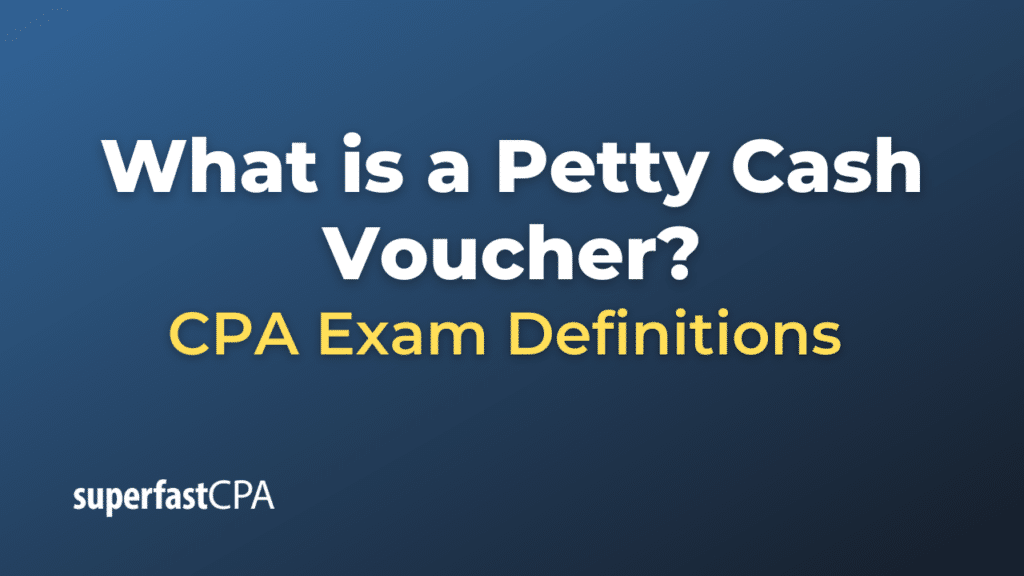Petty Cash Voucher
A petty cash voucher is a form used to document a disbursement (payment) from a petty cash fund. Petty cash vouchers are used as part of a petty cash system to keep track of all disbursements, ensuring that there is a paper trail for all petty cash transactions.
A petty cash voucher typically includes the following information:
- Date: The date when the petty cash was disbursed.
- Amount: The amount of money that was disbursed.
- Recipient: The name of the person who received the money.
- Purpose: A brief description of the reason for the disbursement.
- Approved by: The name of the person (often the petty cash custodian) who approved or made the disbursement.
- Signature: The signature of the person who received the cash.
Whenever money is taken out of the petty cash fund, the recipient fills out a petty cash voucher. If the recipient receives a receipt for their purchase, that receipt is typically attached to the voucher. This helps keep a record of all transactions and aids in the accountability and control of the fund. When the petty cash fund is replenished, the vouchers are used to account for the disbursements and to record them in the company’s general ledger.
Example of a Petty Cash Voucher
Suppose Emily, an employee in ABC Corporation, needs to buy some coffee and snacks for an unexpected meeting with clients. The total cost of these items is $25. She goes to the petty cash custodian, John, and explains the situation.
John disburses $25 from the petty cash fund to Emily. John then fills out a petty cash voucher as follows:
| Date: 07/29/2023 |
|---|
| Amount: $25 |
| Received by: Emily |
| Purpose: Coffee and snacks for client meeting |
| Approved by: John |
| Signature: Emily |
Emily then goes and buys the coffee and snacks, and brings back the receipt. John attaches the receipt to the petty cash voucher.
At the end of the month, John will use the filled petty cash vouchers to determine how much cash has been spent from the petty cash fund and how much needs to be replenished. The vouchers also provide a paper trail for the auditors and serve as a record for entering the petty cash transactions into the company’s general ledger.













